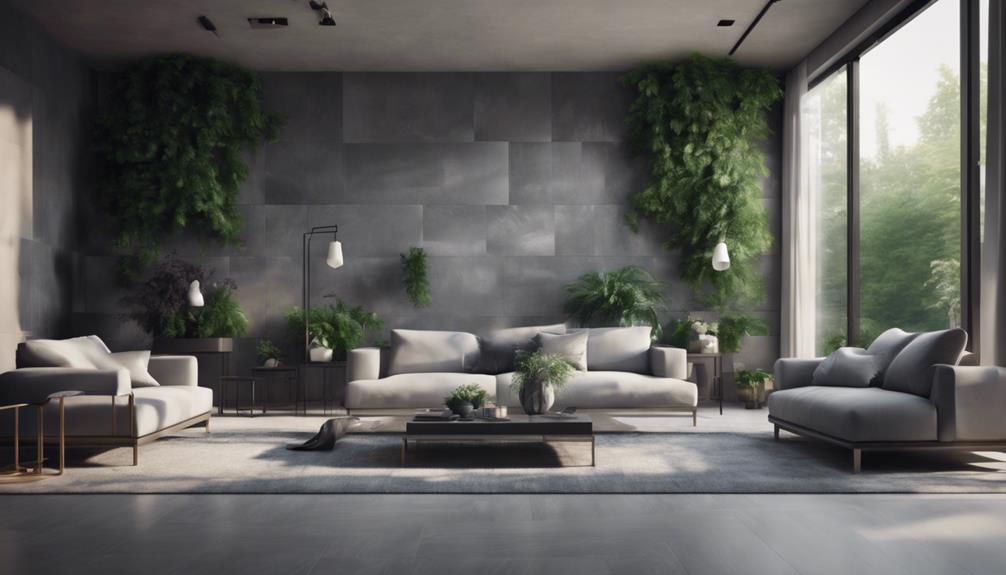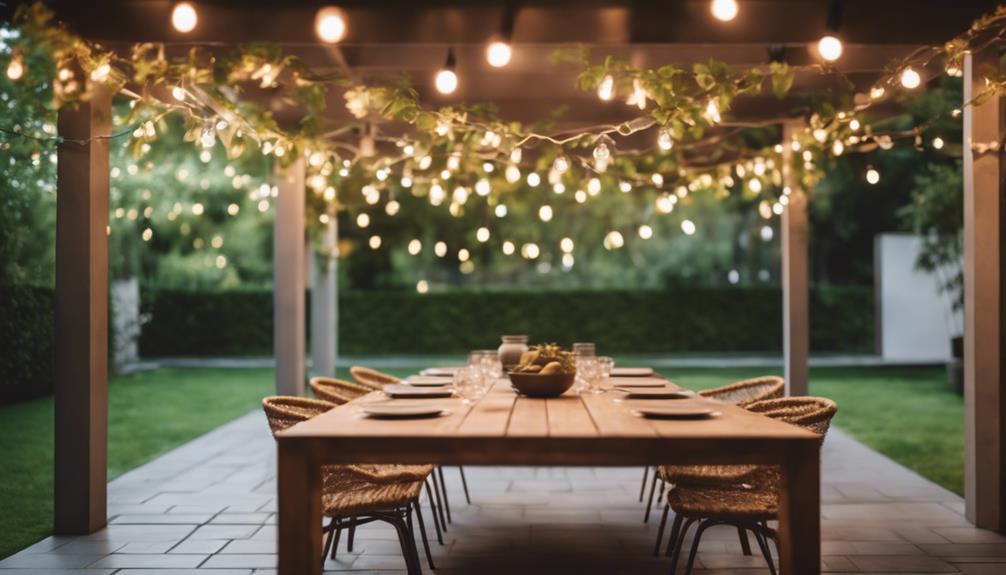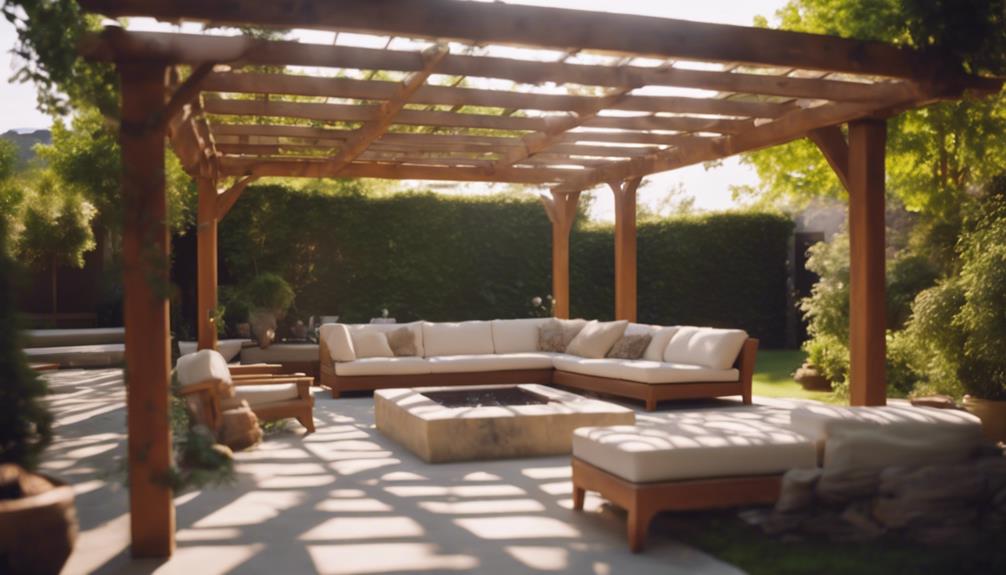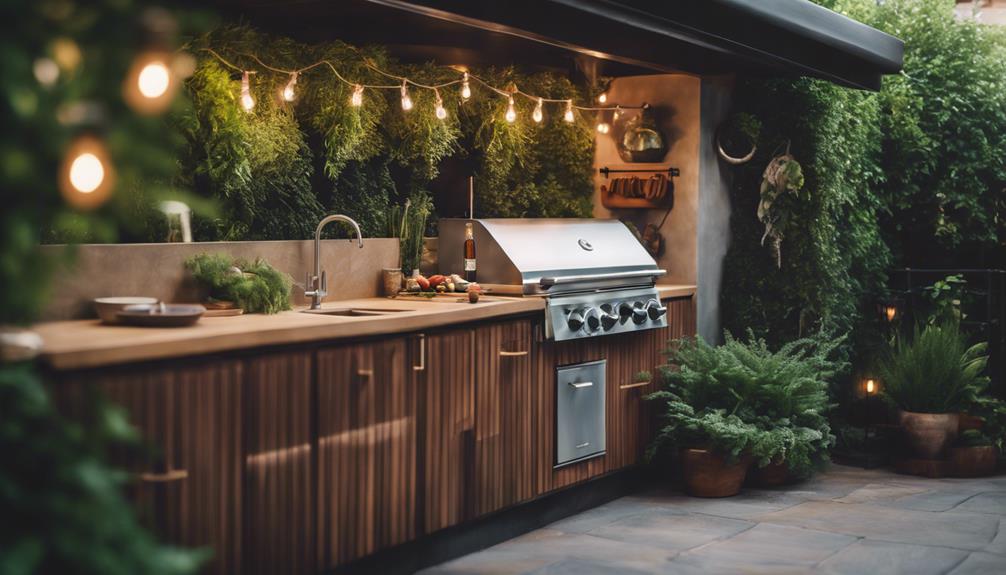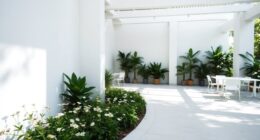You're on the hunt for alfresco tiles that bring together durability and style, and you're not alone! With so many options, it can be overwhelming. But don't worry, you've come to the right place. From natural stone tiles like travertine and limestone to porcelain options, each material has its unique characteristics, durability, and aesthetic appeal. To make the best choice, consider factors like slip-resistance, climate conditions, and personal style. With the right tile and proper installation, you'll be enjoying your outdoor space in no time. Want to learn more about finding the perfect blend of form and function for your alfresco area?
Key Takeaways
- Natural stone tiles like travertine, granite, and limestone offer durability and sophistication for alfresco areas.
- Consider factors like slip-resistance, high-traffic suitability, and climate conditions when choosing durable alfresco tiles.
- Material strength impacts durability and aesthetic appeal, with options like granite and limestone offering durability.
- Surface finish, such as matte finish, can reduce slipperiness and enhance durability in outdoor areas.
- Professional installation and regular maintenance are crucial to ensure the longevity and beauty of alfresco tiles.
Understanding Alfresco Tile Options
When selecting alfresco tiles, you're faced with a diverse range of options, each boasting unique textures and colors to elevate your outdoor space.
Natural stone tiles, like travertine, stand out for their natural texture and ability to add a touch of sophistication to your outdoor living spaces.
As you explore the best outdoor tile options, consider the types of outdoor tile that can withstand the elements and heavy foot traffic. Choosing the right outdoor tile material is vital, and natural stones like granite, limestone, and bluestone are top contenders. These tiles are known for their durability and slip-resistant qualities, making them an excellent choice for outdoor areas.
When it comes to creating an inviting outdoor area, the right tile can make all the difference. By understanding the diverse range of alfresco tile options, you'll be well on your way to creating a stunning and functional outdoor space that's perfect for relaxation and entertainment.
Benefits of Natural Stone Tiles
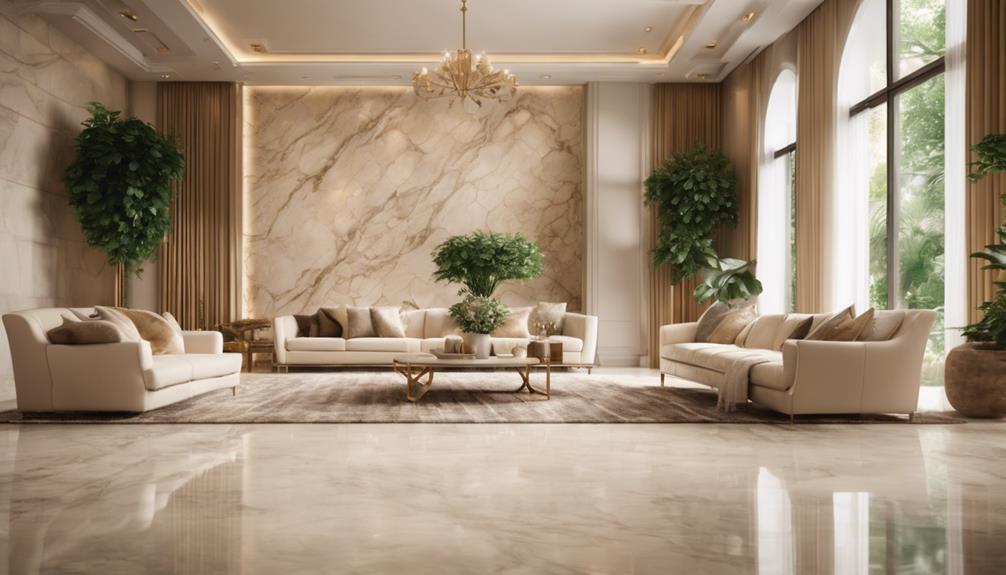
As you explore natural stone tiles for your alfresco space, you'll discover that they offer more than just durability and low maintenance. They also bring a unique aesthetic appeal that can elevate your outdoor area's style and sophistication.
Plus, their timeless beauty can even boost your property's value, making them a worthwhile investment for your home.
Unique Aesthetic Appeal
Embracing the unique aesthetic appeal of natural stone tiles, such as travertine and sandstone, instantly enhances your outdoor space with their organic, earthy charm. You'll love how they add a touch of elegance to your patios, walkways, and pool areas.
The natural textures and colors of these tiles create a one-of-a-kind look that's both stylish and durable. Whether you choose granite, limestone, or bluestone, you can't go wrong with the organic look they bring to your outdoor spaces.
Plus, their durability guarantees they'll withstand the elements, making them a practical choice for alfresco tiling. With natural stone tiles, you can create an alfresco area that's not only beautiful but also long-lasting.
The value they add to your outdoor space is undeniable, making them a worthwhile investment. So, why settle for ordinary when you can have an extraordinary outdoor space that exudes style and sophistication?
Enhanced Property Value
By incorporating natural stone tiles into your outdoor design, you'll not only create a stunning alfresco area but also greatly enhance your property's value and appeal. Natural stone tiles, such as travertine, sandstone, and granite, are a wise investment for homeowners looking to boost their property's value. Here are just a few reasons why:
- Durability and low maintenance: Natural stone tiles can withstand harsh weather conditions, reducing the need for frequent repairs and replacements.
- Timeless appeal: The aesthetic diversity of natural stone tiles offers a luxurious touch to outdoor spaces, guaranteeing your alfresco area remains stylish for years to come.
- Slip-resistant and safe: The slip-resistant properties of natural stone tiles ensure safety in outdoor spaces, providing you with peace of mind when entertaining guests.
Choosing the Right Tile Material
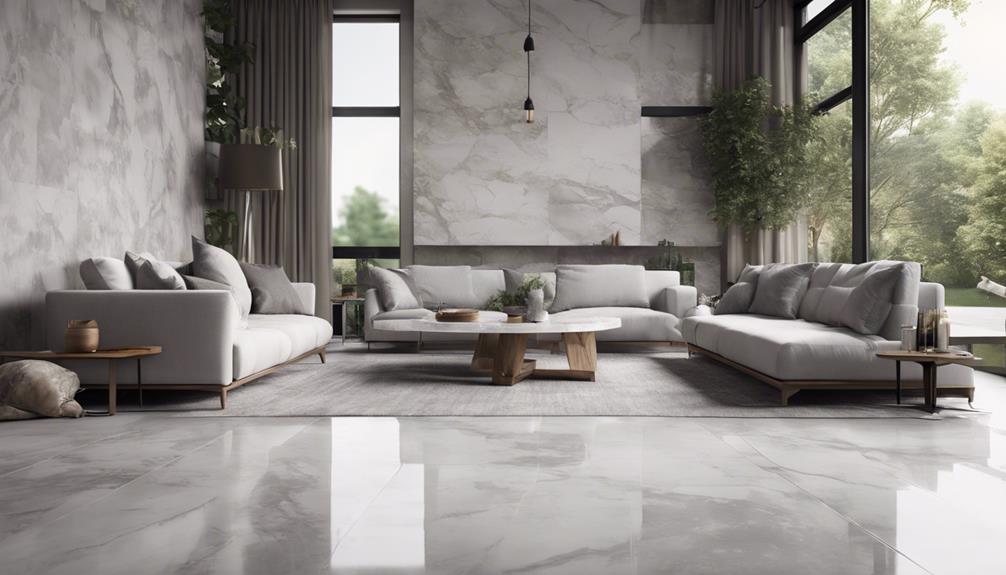
When selecting the perfect alfresco tile material, you'll want to take into account the unique characteristics of each option, from travertine's natural beauty to bluestone's lasting elegance. You've got a range of outdoor tiles to choose from, and each has its pros and cons.
Natural stone options, like granite, limestone, and sandstone, offer a distinct look and feel that's hard to replicate. Granite, for instance, is a great choice for outdoor areas, thanks to its elegant and practical vibe. On the other hand, limestone creates a softer, more calming ambiance.
If you're looking for a good choice for outdoor areas, porcelain tiles are also worth considering. They're durable, low-maintenance, and come in a wide range of colors. Ultimately, the best option for you'll depend on your personal style, budget, and the overall aesthetic you're aiming for.
Durability and Style Considerations
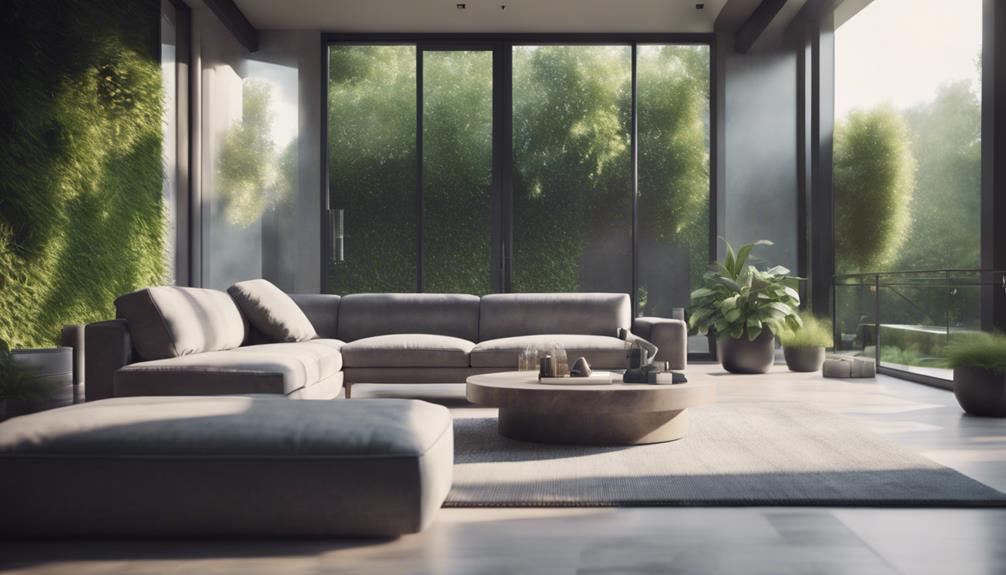
Now that you've chosen the perfect alfresco tile material, it's time to think about the finer details that'll make your outdoor space both durable and stylish.
You'll want to take into account the material's strength, the tile's surface finish, and its ability to resist moisture – all essential factors in creating an alfresco area that's both beautiful and long-lasting.
Material Strength Matters
As you weigh your alfresco tile options, contemplating the material's strength becomes essential, since it directly impacts the durability and aesthetic appeal of your outdoor space. You want your patio area to withstand the elements and remain beautiful for years to come. That's why material strength matters.
When it comes to outdoor tiles, natural stone is a popular choice. Here are three durable options to ponder:
- Granite tiles: Known for their high resistance to wear and tear, granite tiles are an excellent choice for high-traffic areas.
- Sandstone alfresco tiles: With their rugged, natural look, sandstone tiles offer a durable and practical option for outdoor environments.
- Limestone alfresco tiles: For a softer aesthetic, limestone tiles provide a calm ambiance, perfect for creating a serene outdoor oasis.
Travertine alfresco tiles and bluestone alfresco tiles are also great options, offering unique textures and elegant appearances.
Tile Surface Finish
By selecting the perfect tile surface finish, you'll strike the ideal balance between durability and style, ensuring your alfresco area remains a stunning and safe oasis for years to come.
When it comes to outdoor tiles, a matte finish is a great option as it reduces slipperiness and enhances durability.
If you're looking for a stylish look, consider textured finishes like tumbled or brushed – they offer slip resistance and a unique aesthetic.
On the other hand, polished finishes mightn't be the best choice for outdoor use, as they can be slippery when wet.
If you want a modern and sleek look, high gloss finishes are an option, but be prepared for more maintenance.
Ultimately, choose a surface finish that complements your outdoor space's style while prioritizing durability.
Remember, your alfresco area should be a haven, not a hazard.
Moisture Resistance Levels
When selecting alfresco tiles, you'll want to prioritize moisture resistance levels, as the wrong choice can lead to water damage, mold growth, and staining, undermining both durability and style. You're creating an outdoor oasis, after all! Moisture resistance is vital for outdoor areas exposed to rain, humidity, and other weather elements.
Here are three key factors to keep in mind:
- Material selection: Opt for materials like porcelain, granite, or natural stone, which are known for their durability and ability to withstand moisture.
- Textured tiles: Consider textured tiles for enhanced slip resistance in moist environments, prioritizing safety alongside durability.
- Proper installation and sealants: Make sure proper installation techniques and use sealants to further enhance the moisture resistance of alfresco tiles, prolonging their lifespan and maintaining their stylish appearance.
Outdoor Tile Installation Essentials
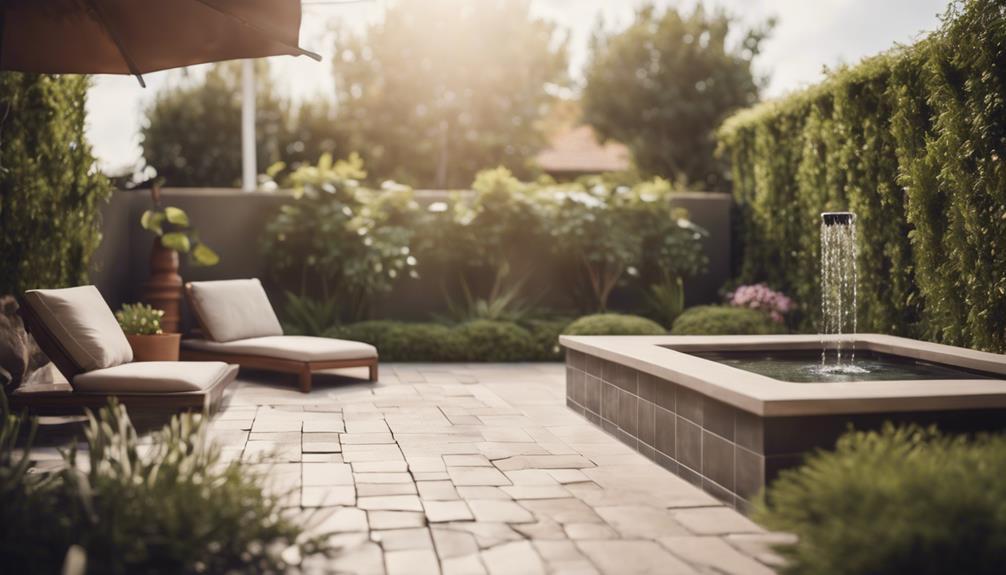
To guarantee a successful outdoor tile installation, you must prepare the subfloor properly. This involves cleaning, leveling, and stabilizing the surface to create a solid foundation for your tiles. This essential step ensures your outdoor tiles will withstand the elements and last for years to come.
When choosing outdoor tiles, opt for ones with a slip-resistant surface to prevent accidents in high-traffic areas. Additionally, consider the climate conditions in your area and select tiles that can withstand extreme temperatures, moisture, and weather damage. Don't forget to use high-quality grout and sealant to protect your tiles from the elements.
If you're not comfortable with the installation process, consider hiring a professional to guarantee a durable and long-lasting result. Remember, proper subfloor preparation and installation are critical to preventing cracking, shifting, and other issues that can compromise the durability of your outdoor tiles.
Maintaining Your Alfresco Tiles

You'll want to establish a regular maintenance routine for your alfresco tiles to preserve their beauty and extend their lifespan. With the right care, your outdoor space can maintain its style and durability for years to come.
Here are some essential tips to keep in mind:
- Clean regularly: Sweep or vacuum your tiles to prevent dirt buildup, and use a mild detergent and water to clean them. Avoid harsh chemicals that can damage the surface.
- Seal for protection: Apply a sealant to protect your tiles from stains, moisture, and harsh weather conditions.
- Inspect periodically: Check your tiles regularly for any damage or wear, addressing any issues promptly to prevent further deterioration.
Frequently Asked Questions
What Is the Most Durable Type of Tile?
So, you're wondering what's the most durable type of tile? Well, let's cut to the chase – porcelain tiles take the cake! They're super dense, water-resistant, and can withstand scratches, stains, and fading.
Plus, they've got a low water absorption rate, making them perfect for outdoor areas. They can handle all sorts of climates and weather conditions, ensuring they'll last you a long, long time.
What Is the Best Type of Tile for Outdoor Use?
You're thinking of revamping your outdoor space, but you're worried that the tiles won't be able to withstand the elements, right? Don't worry, I got you!
For outdoor use, porcelain tiles are your best bet. They're super durable, water-resistant, and can handle whatever Mother Nature throws at them. Plus, they're perfect for various outdoor spaces, from patios to pool areas.
You can't go wrong with porcelain tiles for your outdoor oasis!
What Tile Doesn't Break Easily?
So you're wondering what tile doesn't break easily? Well, you've got a few great options!
Porcelain tiles are super durable and resistant to breakage, making them perfect for outdoor areas.
Granite tiles are also extremely strong and can withstand high-traffic areas.
And if you want a more natural look, travertine and bluestone tiles are both tough and less prone to breaking.
Limestone tiles are also a good choice, although they're slightly softer than granite.
What Is the Best Tile for an Outdoor Island?
You're building an outdoor island and wondering what tile to use, right?
Let's face it, you don't want to be replacing tiles every other week!
For a durable and stylish outdoor island, consider porcelain tiles – they're basically indestructible!
They're water-resistant, low-maintenance, and can withstand the harsh outdoor elements.
Plus, they come in a variety of styles to fit your aesthetic.
Trust us, your outdoor island will thank you!
Conclusion
You've made it to the end of our alfresco tile adventure! Now, go forth and choose the perfect tiles for your outdoor oasis.
Did you know that 75% of homeowners consider outdoor living spaces a must-have when buying or selling a home? That's right, folks! Alfresco areas are where it's at!
By following our guide, you'll be well on your way to creating a stunning and durable outdoor space that'll make your neighbors green with envy.
Happy tiling!
